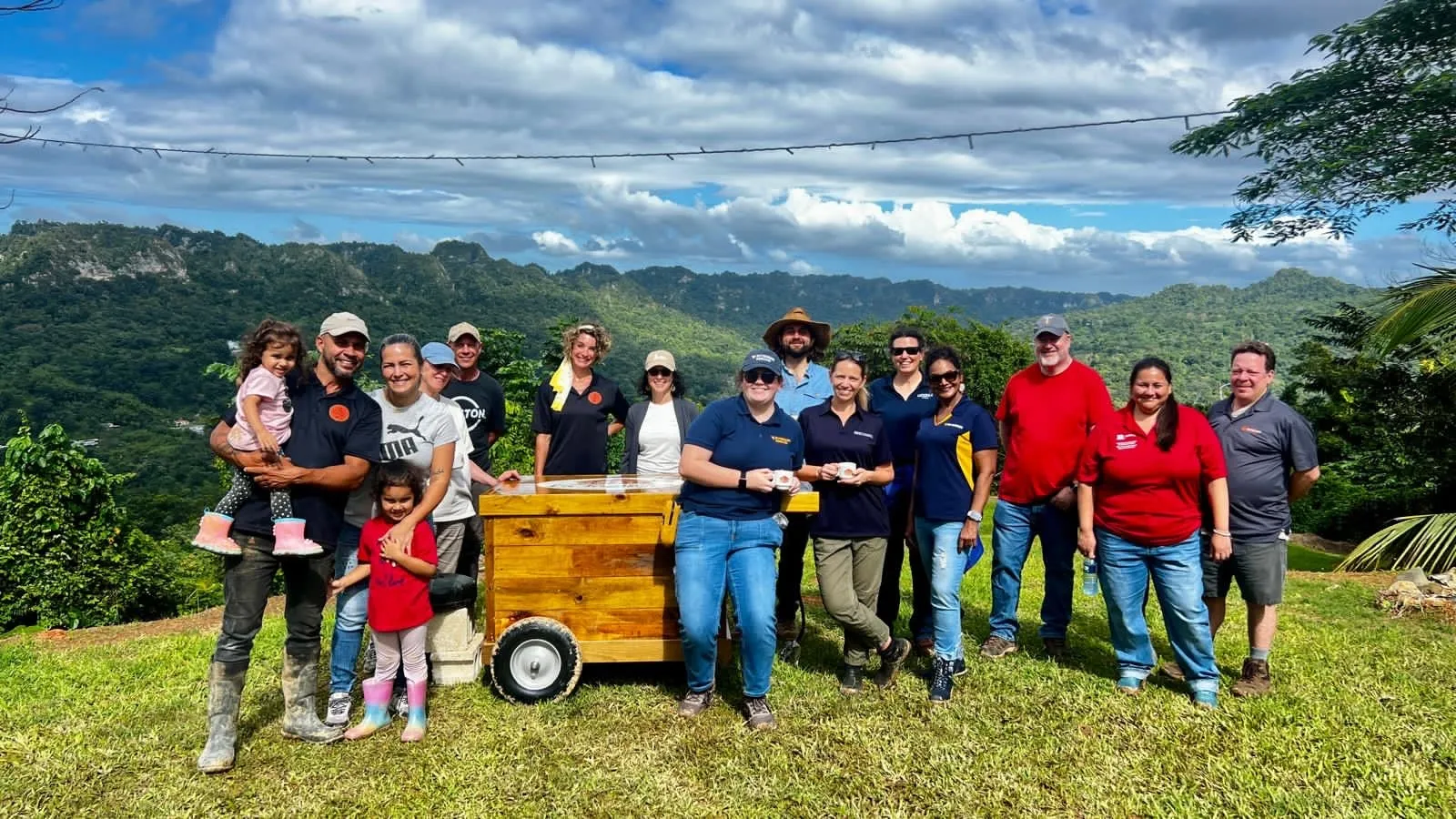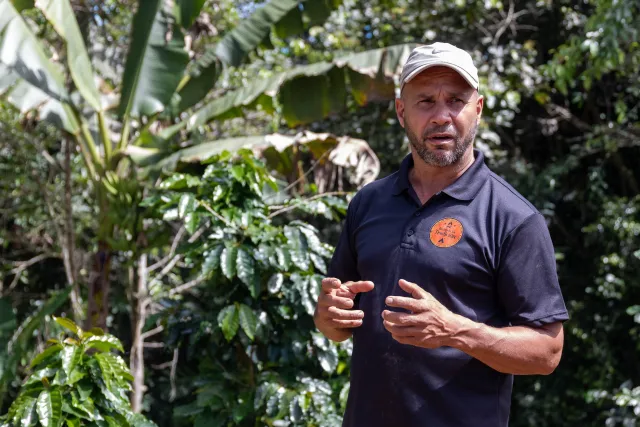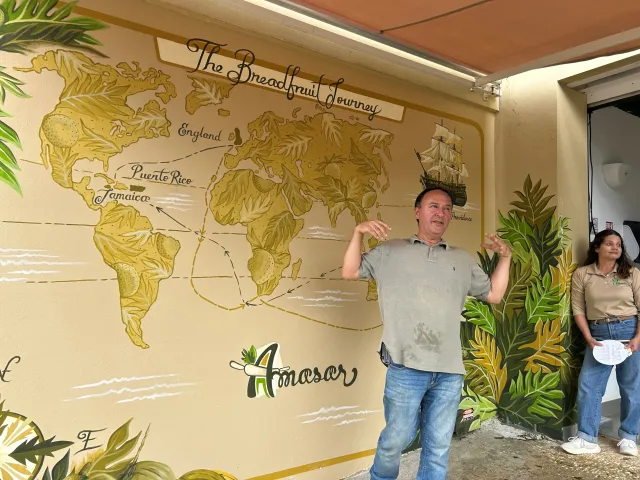California agritourism can learn from small farms in Puerto Rico
UC ANR expert: Agritourism serves as potential safety net for producers
Rachael Callahan, statewide agritourism coordinator for the UC Sustainable Agriculture Research and Education Program, recently returned from a trip to Puerto Rico where she and collaborators across the country convened for a project team meeting. The project, funded by the U.S. Department of Agriculture Beginning Farmer and Rancher Development Program (BFRDP), will develop a national curriculum to help agritourism service providers support farmers in implementing agritourism practices that complement their agricultural operations.

In this first year of the project, the 11-member project team met in Puerto Rico to lay the groundwork for developing the national curriculum. The group assessed existing resources for educating farmers and ranchers interested in agritourism and visited agritourism operations that exemplify how small-scale farmers can diversify revenue to overcome their challenges.
California farmers, ranchers and other stakeholders can learn more about supporting agritourism development during the California Agritourism Summit on May 14-15, 2025; register soon as the deadline is April 30.
Agritourism operations create new markets for products
In Cordillera Central, the mountainous region in the center of island, the team visited small-scale family farms near the town of Utuado. With mountains, rivers and caverns providing a variety of outdoor recreational opportunities, the area's farmers are trying to capitalize on the tourism market. Opportunities for incorporating agritourism into farming operations include overnight farm stays, farm tours, factory tours and product tasting.

This region has a rich agricultural history and is the primary producer of coffee on the island. During the visit, the team had the privilege of touring several coffee farms that have successfully integrated agritourism into their operations.
Carlos Casanas offers tours and tastings at Hacienda La Tradicion. Here, coffee plants are interplanted with citrus and breadfruit, creating a shady canopy that not only enhances coffee production but also diversifies farm income. Casanas educates consumers on the proper preparation, tasting and enjoyment of coffee, while highlighting the unique qualities of Puerto Rico grown coffee.
The tours and tastings bring in income and also produce an educated consumer who will be willing to pay a premium for Casanas’ product.

He aspires to build on his current agritourism offerings by establishing a café nestled among the coffee trees, providing visitors with an immersive coffee experience.
Another agritourism example is Amasar breadfruit farm. Amasar owners Marisol Villalobos and Jesus Martes are using agritourism to develop a market for the breadfruit crop, which is not widely known in the United States. During a factory tour, visitors are educated on the nutritional value of and uses for breadfruit flour, which is a traditional ingredient in Puerto Rican cuisine.
Amasar has introduced some products to the East Coast of the continental U.S., including an easy-to-make pancake and waffle mix, with plans to expand the market nationwide. Their innovative approach of educating farm visitors to create a new market for their products showcases the potential economic benefits of agritourism.
Agritourism aids in disaster recovery
Every farm visited by the team is still rebuilding their agricultural production following the devastating impacts of Hurricane Maria in 2017. While rebuilding, farming operations didn’t have production levels necessary to sustain their agricultural businesses, so farms relied on agritourism activities, such as farm stays to supplement their income. Visitors seeking agricultural experiences played a crucial role in providing much-needed income while new crops were beginning to take root.
Now, with the plantings producing sufficient quantities once again, agritourism activities have become more engaging for visitors. Guests can witness the farm in full operation and even participate in the harvest.
Agritourism can be safety net in California
While listening to the Puerto Rican farmers tell their stories of recovering from Hurricane Maria, Callahan reflected on natural disasters impacting California’s farmers and ranchers and wondered if agritourism could support the resiliency of California agriculture to bounce back after disaster.
California farmers and ranchers experience crop losses, reduced income and increased costs caused by fire and flooding, during times of drought and due to climate extremes.
“Following Hurricane Maria, Puerto Rican farmers adapted their operations to include agritourism activities to bridge the income gap during the time it takes to replant and recover to full production levels,” said Callahan. “We saw something similar happen in California during the pandemic. Farmers and ranchers that were already offering agritourism, or were able to pivot to offering agritourism, benefited from a diversified revenue stream when other market channels, such as restaurants, were unavailable.”
Starting an agritourism enterprise, however, is not straightforward in California. External factors such as regulations and permitting, concerns about safety and liability, and the involvement of governments, tourism entities and economic development agencies all play a role in successful agritourism development. A shared understanding of the potential for agritourism in California can help shape a path forward for the industry.
“I see really strong examples of agritourism working in other countries, states and territories,” Callahan said. “It’s my responsibility to bring transferrable lessons back to California and try to get everyone to think intentionally about the role agritourism can play as a comprehensive risk management strategy that can enhance the long-term sustainability and viability of California's agricultural industry.”
California Agritourism Summit to share insights, practical advice
Growers, ranchers, producer and community-based organizations, state and local governments, destination marketing organizations and tourism professionals, and economic development professionals are invited to the California Agritourism Summit, May 14-15 in San Diego County.
Organized by UC SAREP and UC Cooperative Extension in San Diego County, the event will bring together agritourism stakeholders to share current initiatives and industry developments, gain practical tools to start or expand an agritourism business, develop strategic partnerships and create a collective vision for the future of agritourism in California.
Karen Ross, secretary of the California Department of Food and Agriculture, and Caroline Beteta, president and CEO of Visit California, are invited speakers. The event will feature expert panels, roundtable discussions, presentations, networking opportunities and tours of successful agritourism operations. Register to attend the summit.
This is the first in a series of blog posts exploring agritourism potential in California. Subscribe to Agritourism Connections to receive notifications of future stories.
